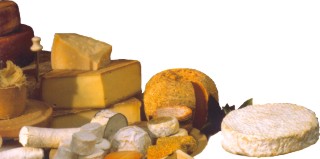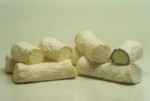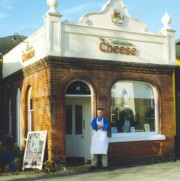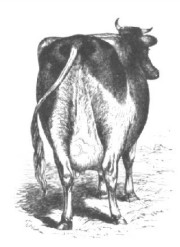 Issue No. 1 - June/July 1998 |
 |
||||||||
| If you came direct to the Cheesewire and want to visit our main site, click here |
|
||||||||
|
The Teddington Cheese attracts customers living all over Britain from Clacton to Cardigan and from Swanage to Stornaway. Local customers visit us to taste and discuss the world of cheese. We hope this newsletter will bring the shop closer to our customers further afield. In each issue we will cover a wide range of cheese issues and include regular features: Cheese focus: We take a close look at a different cheese each month exploring its history, the production methods used and the people involved. Farm focus: Making a quality cheese starts with choosing the right animals and growing the right grass on which they graze. We examine the animals and the farming practices essential for the production of the finest cheeses. Tools of the trade: Cheese has been made for thousands of years and the methods and tools which have evolved are fascinating. Products: New products, services and gift ideas at the Teddington Cheese. Cheese tips: Tips on selecting, storing and serving cheese. |
|||||||||
|
The cheese iron is an invaluable tool
for the cheese maker, grader and cheesemonger. Its is used to assess a
cheese without the need for cutting it open. 1. The plug is passed under the nose to check for any off-flavours and to assess the degree of maturity from the gas released. 2. A check is made for visual defects, mottling, dirt contamination, open texture, bleaching and graininess. 3. The iron is turned over and the back surface examined; if the cheese has the right moisture level it will shroud the blade with a clear film of fat, a dry curd will leave no fat or small particles of rolled curd on the surface. 4. A small piece of cheese from the end of the plug is taken and rolled between the thumb and forefinger which gives an indication to the condition of the cheese and releases more aroma. 5. Finally, the plug is returned to the cheese and the gap in the surface filled with the cheese moulded between the fingers. All this takes only a few seconds after which we know if the cheese needs further ripening or can be taken and sold.
|
An unpasteurised mould ripened goats cheese based originally on the Saint Maure recipe. Log shaped and around 5 inches long it has a bright white paste, firm but creamy texture and a mild to medium mellow flavour. Kevin and Alison Blunt live on a small holding near Lewes in East Sussex. They have three sons and have been making Golden Cross for over nine years, enjoying success at a number of cheese competitions. Originally Kevin studied Biochemistry and Alison, Human Biology, but like many of us they were looking for the 'good life'. With limited funds, they were able to buy a basic small holding in East Sussex and started out with just a few goats and egg laying hens. Unfortunately the small holding did not include a house, so they had to make do with a caravan for the first two years. The cheese was developed by Kevin, Alison and Regis Dussartre, who was making cheese locally. When Regis announced his retirement from cheese making the Blunts' herd of goats had grown and was producing enough milk to start making cheese on a small scale. Together the three of them developed the recipe for Golden Cross and Kevin and Alison have since become expert cheesemakers. Based on the Saint Maure recipe, it is made from unpasteurised milk, has a coating of ash and uses the same moulds and equipment, but this is where the similarity ends. Kevin and Alison have made some slight changes which make Golden Cross a unique cheese. It does not have the characteristic straw running through the centre (Alsion tells me that the Environmental Health officers would have difficulty in accepting straw in a cheese). The softer Saint Maure needs the straw to keep the cheese together but the Golden Cross is slightly firmer and thus, a little more robust. Golden Cross is suitable for vegetarians unlike Saint Maure. The Golden Cross is ready to eat 10 to 14 days after making and can be matured for a further 4 weeks, its texture becoming harder and dryer. Each cheese weights approximately 250g reducing to 200g when mature. It is available both ashed and plain throughout the year, but supplies are very limited in the autumn and winter months. The cheese is excellent on a cheese board as well as being versatile in the kitchen - see the recipe section. |
||||||||
|
WHY NOT COME AND SEE US WHEN YOU ARE NEXT IN LONDON?
|
||||||||
| BACK TO TOP | |||||||||
| All articles © www.teddingtoncheese.co.uk | |||||||||





